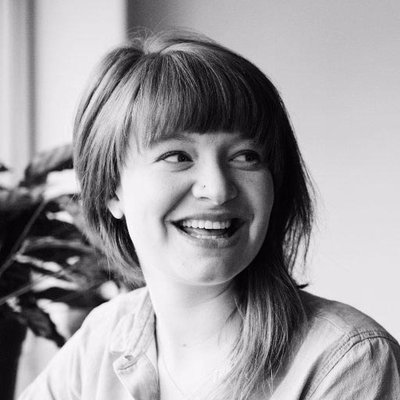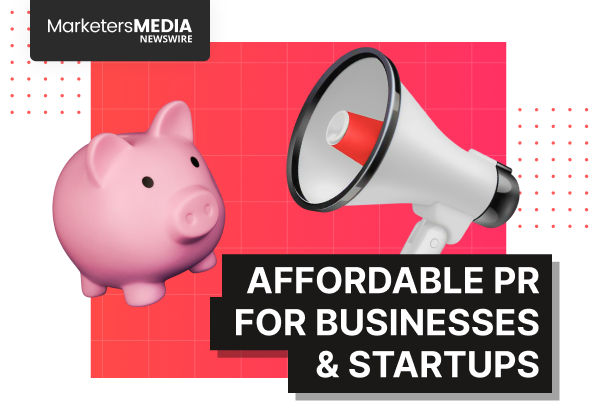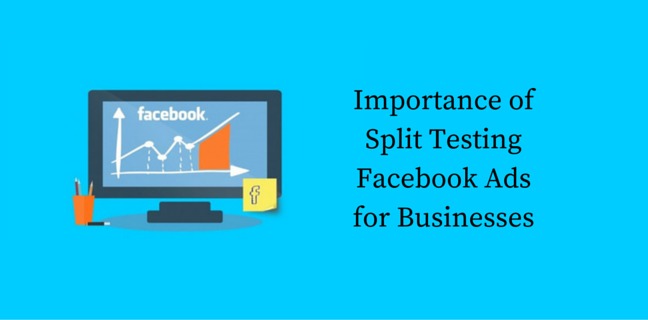Table of Content
No headings found.
Getting your press release noticed can make or break a business, that is the power of PR. Everything we see in the media has been touched by PR, yet it remains the ‘final frontier’ for small businesses looking to get their message featured in big media publications. This is why it is so important that you take control of your own public relations. Here is how small businesses can benefit from big media.
Research How The Media Industry Works
You have a new product launch; that’s great. But it’s not enough to attract the attention of a major publication. Every day, journalists receive hundreds of emails from companies looking to get their product launched to the masses. The competition is fierce, even more so for traditional broadcast outlets, e.g. newspapers, radio, TV, magazines.
Major online publications, on the other hand, have more freedom to expand their ‘column inches’, since there is endless online space to fill and 24-hour news cycles are the norm across all industries.
What they are looking for is a way to get out a fast story that will appeal to their readers’ sensibilities in that moment. This is why it is crucial to research the publications you are trying to target. You will need to have in-depth knowledge of their typical reader’s leanings and decide whether your company values and products will appeal to them. It is tempting to go for publications you personally read and enjoy, but you need to make sure that your PR efforts pay off and bring in a real boost in sales.
Blogs and publications exist for every industry and market niche, and more importantly, they have devoted followers who respond positively to brand publicity. In fact, smaller niche-specific titles can attract higher levels of brand engagement, as these publications are sought out by ‘hardcore’ fans. These are the experts who want credible recommendations of businesses who really ‘get’ what they’re looking for. The devotion of these experts will drive interested buyers to your brand for years to come.
From a larger perspective, journalists who are on the hunt for a story use these niche-specific titles to conduct research. When you’re inside the media industry, you’re constantly under pressure to find a fresh angle that has never been covered before. They are also looking to build trust and expertise in the subjects they’re writing about, so they will seek out these same experts for quotes and recommendations. Plus, building a devoted fanbase could form the basis of grabbing larger media outlets’ attention further down the line.
Think About Your Story
Every brand has a compelling story to tell; this is how you should think about your small business trying to make an impact on the wider media landscape.
It’s down to you to find out what that story is, and more importantly, how it is compelling and unique. On the face of things, this may seem difficult to conceptualize. You may need to interview key players in your business’ operations to help you uncover the fresh angle that will get you noticed. To start with, consider your founding story and what made you decide to start your own business.
- What keeps your customers awake at night and what unique problem does your business solve?
- What causes do you value most in the world and how do you translate them into your business’ goals?
- What unique, personal qualities and interests spur you on each day to make a success out of your business?
- How do you address critics or people who are hesitant to engage with your business – how do you convince them to trust in your brand?
Once you have brainstormed some ideas, come up with a totally original angle for your press release, or uncover a fresh angle for your latest product launch or company event, etc.
See more guidelines for press releases here.
Create The Perfect Press Release
As mentioned previously, journalists have very little time to read your press release, so you need to put most of your efforts into crafting a killer headline.
Tips for writing a winning headline:
- Mention a keyword that readers would use to find your busineses online
- Keep the headline short – under 80 characters long
Besides having very little time to read your email, journalists also have very little time to put the story together before their publication deadline. Although it may be tempting to do all of the work for them and write your post as you want it to appear in print, don’t do this. A reporter will have to rewrite the story anyway, so rather than give them paragraphs of block prose to process, give them a story outline that is easier to digest.
- Describe the angle and unique ‘hook’ of your story pitch within the first few sentences
- Use bullet points that highlight your story’s key benefits – not your products’ benefits
- Line up your research findings and include links to the original research report so the reporter can do his own investigations
- Include supporting quotes and supplementary text in a logical order that will effectively help to put your story across
- Provide a professional quality image to make the story eye-catching
- Include contact details for key people featured in your article
Position Yourself As An Expert
Another key aspect of successfully managing your business’ public relations is your readiness to respond and address the press’s questions when the spotlight falls on your brand. 24-hour news cycles are fast-moving and global, so keep your phone with you and be ready with your prepared statements and camera-ready look, should you be called to appear on TV or on an internet live-stream.
Similarly, you can also position yourself as ready to interact with the press by signing up for a service like Help a Reporter Out (HARO). This is a site that connects journalists, sources, and businesses to make it easy for a reporter to contact experts if they need them. By putting yourself forward as an expert in your industry, you may get journalists coming to you to get information, potentially bringing worldwide attention to your brand.
Look Further Afield For Publicity
Social media is driving independent media and these alternative influencers bring in huge numbers of internet followers. On Instagram, small businesses in recent years have managed to make a powerful impact on their sales figures. By putting their products and brand stories into the hands of social media personalities, they can leverage the attention of customers who hang on these personalities’ through every recommendation.
Be aware of the fact that when handing your story over to any journalist or influencer online, you will also be handing over creative control in terms of what they say about your business. Make sure that you are putting your ‘best face forward’ and provide them with all of the branding, images and quality products they need in order to put in a good word for you to their audiences.
As this publicity discipline is fairly new, the prices for brands looking to work with social media influencers are relatively affordable.
Tips for finding the right social media influencers:
- Search popular hashtags in your industry. You can use a service like hashtagify to help you
- Find influencers who use these hashtags regularly – make a list of accounts that have more than 20,000 followers
- Check their content for sponsored product posts and check that these posts align with your brand values
- Make sure that they have their contact details and website listed in their bio. This will show that they are open to being contacted by brands looking to do businesses with them
- Contribute to their conversations online by providing them with expert information that doesn’t come across as too salesy, before sending your pitch
Native Advertising
Native advertising campaigns can get you onto major news content sites easily and quite cheaply. But please note that these stories are not true PR, in the sense that they are clearly labeled as advertisements, rather than organically mentioned by the press as a means of recommendation or response.
However, this does not mean that you should rule out the art of PR in writing these native pieces for big media. Think of the stories in exactly the same way as a press release.
Tips for native advertising:
- Make your headline the center of your post, so it’s impossible for your readers to not want to find out more
- Hook your readers in from the start by outlining their problems and fears
- Go into how they can solve the problem and the benefits of doing so with your services
- Ensure that your copy meets the site’s terms of conduct for advertisers
- Provide links and calls to action encouraging your readers to find out more
- Use attractive and emotive images, videos and different content types to draw in further engagement
Provide A Hub For Communications
It is recommended that brands take an interest in their own PR, rather than entrusting it wholly to outside sources. Even with the most seasoned publicity experts in the world on your team, understanding what is happening with your PR campaigns will be crucial in maintaining ROI.
In enlisting the help of a PR agency, you are paying for their journalistic connections and their ability to follow trends and anticipate the kind of stories reporters want to write.
However, you are the expert in your brand and that is not to be ignored in creating a publicity campaign that appeals to your real-life customers.
Use this to your advantage by researching trends and your buyers’ interests, and combine this research with your expertise, to become a trusted and switched-on source for journalists.
Provide a company blog and regularly contribute articles with a wider industry focus. Talk about trends and don’t be afraid to make these longer and more in-depth posts of around 2000 words.
As far as possible, make content that doesn’t age and make efforts to get it published on other blogs. This is known as evergreen content – if you include links to your website, you should start drawing in steady internet traffic from these sites.
Consider the journey readers make as they interact with your content to maximize your chances of making a sale. From a guest post, for instance, make sure you include a call to action and link to perform another activity. If this means diversifying your product offerings, for instance, make your own online store and include links to the specific products mentioned.
Follow Up On Your PR Activities
Once you have done all you can to get noticed, it is vital that you maintain good public relations practices to keep your brand’s reputation ‘squeaky clean’.
In all circumstances, be polite and transparent in your communications with the general public. If you have to release a public statement because something has gone amiss, be transparent about it. Admit and apologize for your mistakes and show your audiences that you are doing all you can to quickly resolve the issue. A company that is honest and genuinely interested in serving its customers’ needs will build good relations with the public and a business model that’s sustainable.
Big media comes in many forms, and luckily for small businesses, it has never been easier to ‘scale-up’ public exposure and bring in the right kinds of customers to your brand. Think about your story and how your business may be most uniquely positioned to help solve your customer's problems, and you should be well on your way to getting noticed by the major media players.
About the Author:

Victoria Greene, a branding expert and writer for VictoriaEcommerce. Here she dispenses tips for brands looking to attract worldwide media exposure.
Free Press Release Template
Tell us where to send your PDF:






